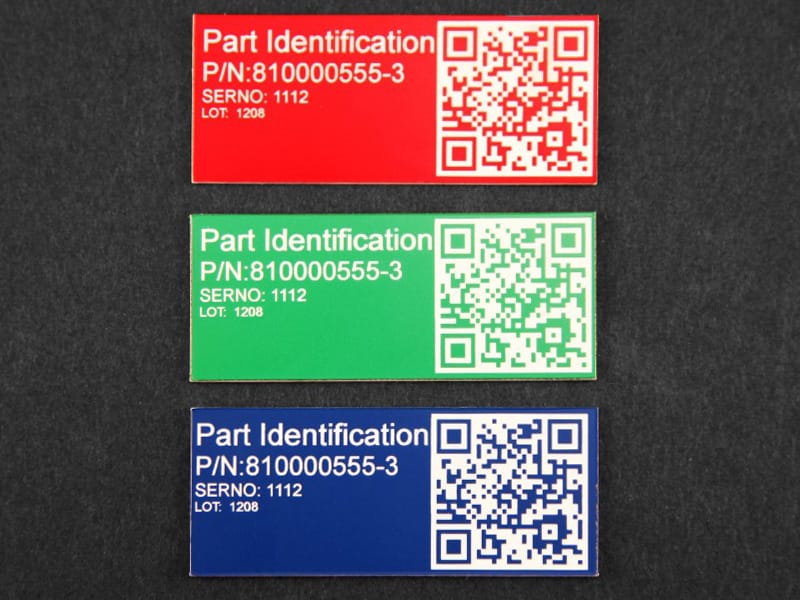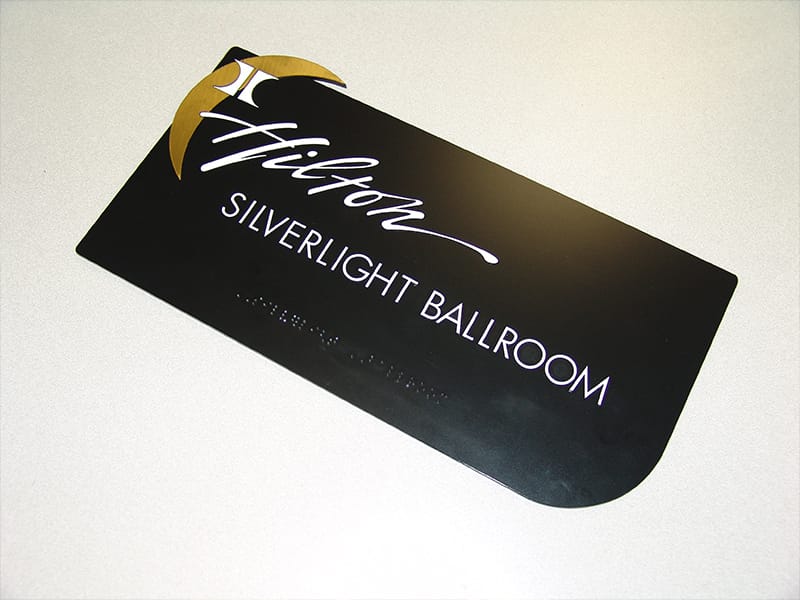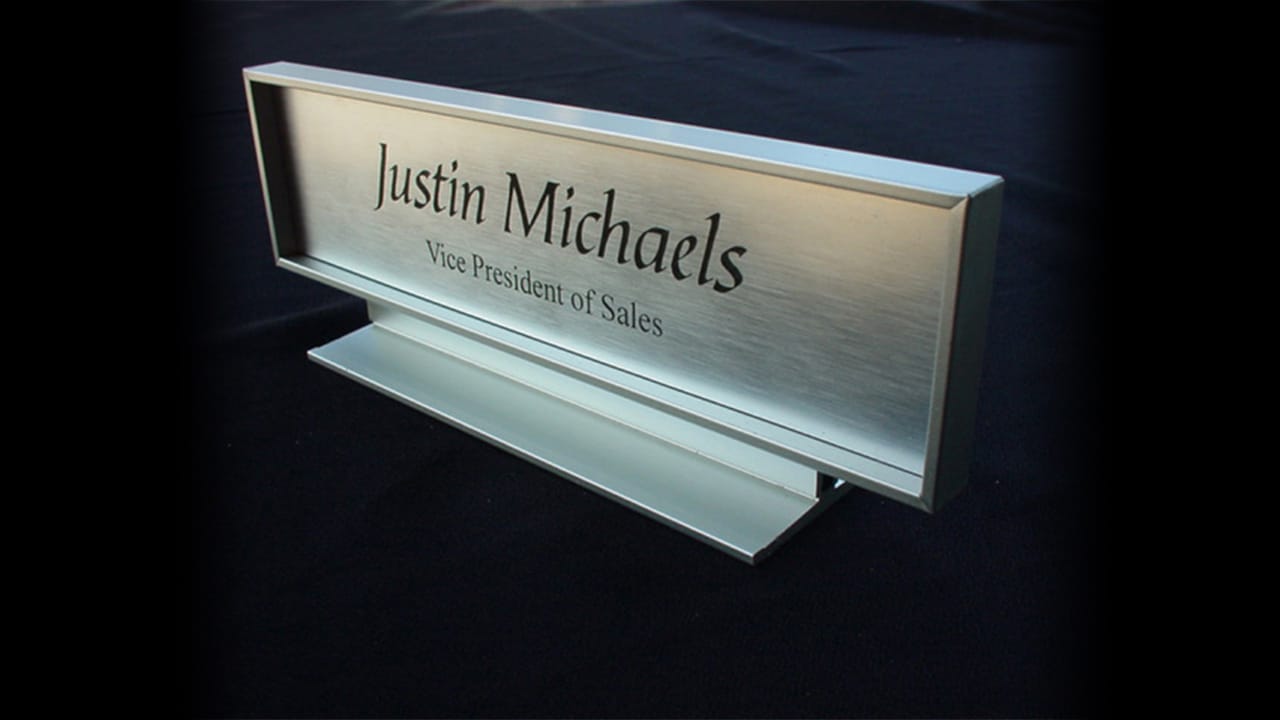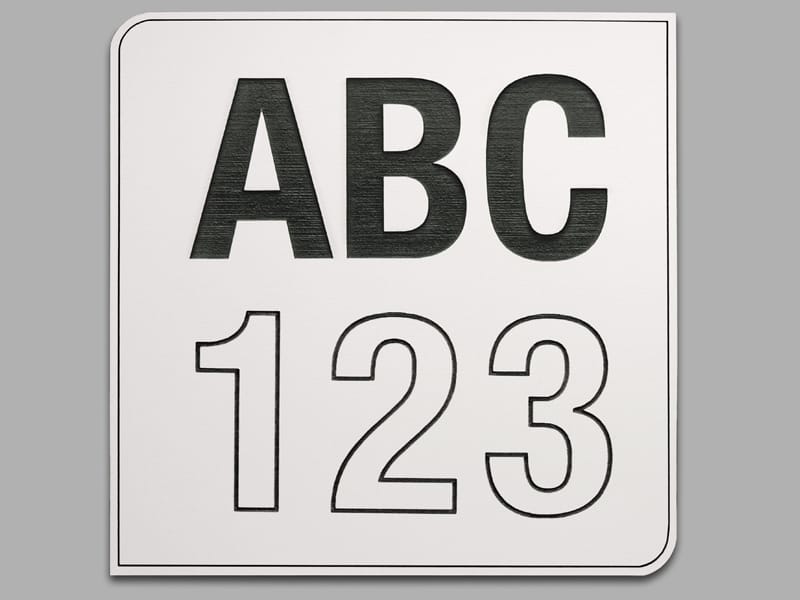Processing Microsurface Plastic Using DLMP®
Microsurface plastic (sometimes called “engraver's plastic”) is a two-part, polymer-based product specifically engineered for CO2 laser systems. The two parts consist of a very thin top layer (~0.001” or 0.025mm) and a thick bottom layer of a contrasting color. These are often called the cap and core, respectively. The cap layer may be a solid color with a matte, satin, or glossy finish. Other varieties include cap layers with metallic fillers to simulate solid brass and aluminum as well as printed wood grain. The core layer is typically a high contrast solid color, such as black or white. Microsurface plastic is also offered with a UV stabilizer, making it suitable for use in outdoor environments.
The plastic chemistry used is typically a blend of acrylic and styrene polymers and copolymers. Styrene is used as a copolymer to break up the closely packed structure of acrylic and impart flexibility. Similar to purer forms of acrylic, microsurface plastic products depolymerize easily under focused infrared energy.
Microsurface Plastic and DLMP® Technology
The key factor making microsurface plastic compatible with DLMP (Digital Laser Material Processing) is its specific polymer chemistry. This material undergoes rapid depolymerization and vaporization, unlike other materials that may oxidize and char.
The most useful effect of laser energy with microsurface plastic is material ablation.
For more information, see our Laser Material Processing Whitepaper.
Material Ablation
Organic polymers, such as those in microsurface plastic, are excellent absorbers of CO2 laser energy (wavelength=10.6μm). When the polymer absorbs laser energy, it rapidly converts optical energy into molecular vibrations (heat). Rapid chemical depolymerization occurs with sufficient heat. Depolymerization is the process by which polymers are broken down into their repeating chemical unit. Material directly in the laser path is ablated away into vapor. This effluent may also contain fine particles, such as solid fillers and pigments. The material just outside of the laser's spot or path will conduct some heat, but not enough for complete and thorough combustion and ablation. This area of thermal affect is often referred to as the heat affected zone (HAZ). In microsurface plastic the HAZ is minimal. The newly exposed surfaces may be coated with a layer of sticky residue. This residue can be removed with a common solvent, such as denatured alcohol. If it is not removed, the residue will harden overnight.
Material Modification
Material modification is a physical process altering the properties and/or appearance. Laser marking does not yield a useful result with microsurface plastic. The interaction between the laser and the material melts the surface and does not result in a mark to the surface.
Combined Processes
Environmental, Health and Safety Considerations
Laser material interactions almost always create gaseous effluent and/or particles. Processing microsurface plastic (Rowmark® LaserMark® brand) with a CO2 laser generates vapors primarily containing methyl methacrylate, diethyl ether, cyclopropanecarboxylic acid, acetic acid, ethyl acrylate, methyl isobutyrate, and propionic acid. The effluent from processing microsurface plastic should be routed to the exterior environment. Alternatively, it may be treated with a filtration system first and then routed to an exterior environment. Vapors from laser processing acrylic and styrene based products such as this are flammable. Laser processing microsurface plastic should always be supervised.








